Today the German Karabiner 98a can more often been found on the market with the “1920” marking than the Gewehr 98. The exact position of the mark on the receiver may vary.
By Michael Heidler
The First World War had caused a major progress in military technology. Never before had such great evolutionary advances had been achieved in so short a time. Still shocked by the merciless trench warfare with innumerable casualties, it’s no surprise that the victorious powers had a desire to weaken the German armed forces for the future. The development of automatic weapons was still in its infancy, but the results achieved at the front showed that these kinds of weapons will be indispensable in a modern war.
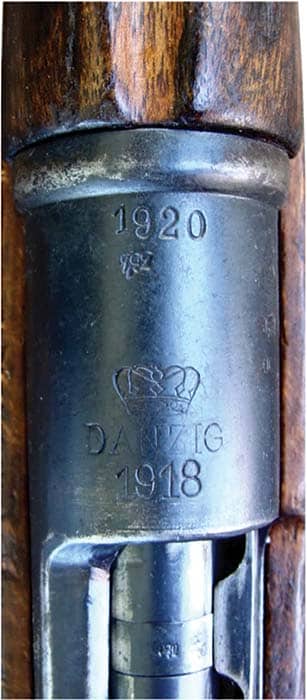
After the lost war the combined German Reichswehr (Army) and Kriegsmarine (Navy) were reduced to a total of 115,000 men and conscription was abolished. The victors claimed high reparations payments and dismantled German machinery. Famous German armament companies like Mauser had to convert their production to consumer articles, whilst the allies approved the relatively inexperienced Simson & Co. company of Suhl as the sole producer of pistols, rifles and machine guns. The permitted armament for the Reichswehr was precisely defined in Article 180 of the Peace Treaty as, for instance among small arms, 84,000 rifles (Mauser 98 system), 18,000 carbines (Mauser 98 system) and 1,863 machine guns. Surplus weapons had to be handed over to the victors (although they often disappeared) and new developments were forbidden. The disarming of the people was also planned to reduce the danger of armed revolts provoked from different political groups.
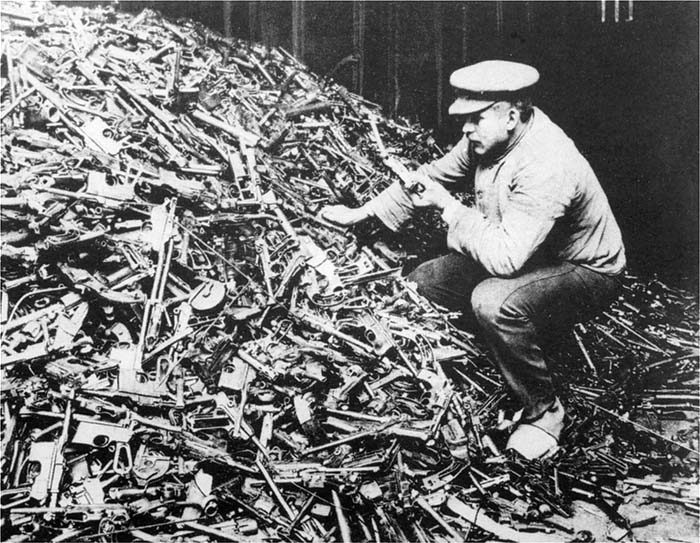
Bringing tears into collectors eyes: A pile of German weapons less all wooden parts, waiting for the furnace. Don’t think about the value of this pile on the market today. 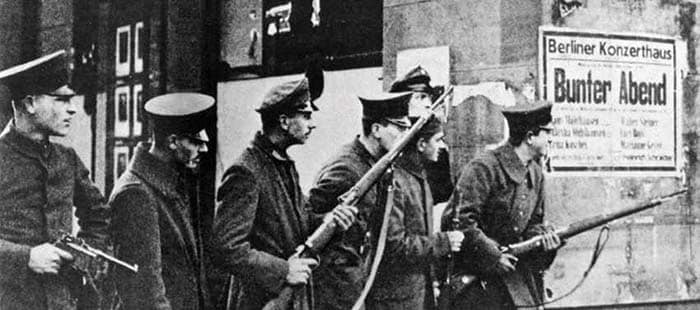
Freikorps fighting in Berlin in November 1918. Note the Gewehr 98 and the Mauser Broomhandle.
In midyear of 1920 the general disarming of the German and Austrian people was announced by the victorious powers. At a meeting of the German general staff on July 11, 1920 General von Seeckt told the other participants that about 2,700,000 rifles will have to be collected. About 600,000 of them are in the hands of the Einwohnerwehren (citizens’ militia). He also suggested they offer rewards for weapons that are handed over, or for information about hidden weapons.
No date was fixed yet, but the German War Office reacted promptly. On August 4, 1920 the instruction number 959 (with date August 1) “Marking of hand weapons and machine guns of the Reichswehr before the general disarming of the people” was published in the “Heeres-Verordnungsblatt” (Army Ordinances Gazette): The impending disarming makes it necessary for the army district commands to mark all the weapons in their possession, including cavalry units and military schools, with an unique distinctive identification-symbol. This ensured that during the collection, all weapons owned by the Reichswehr could easily be identified in the cases that they are found in the hands of unauthorized persons. The Annex of the instruction shows in graphics where the new identification-marking “1920” has to be placed on rifles, pistols, machine guns and their mounts, submachine guns, sabers, bayonets and lances.
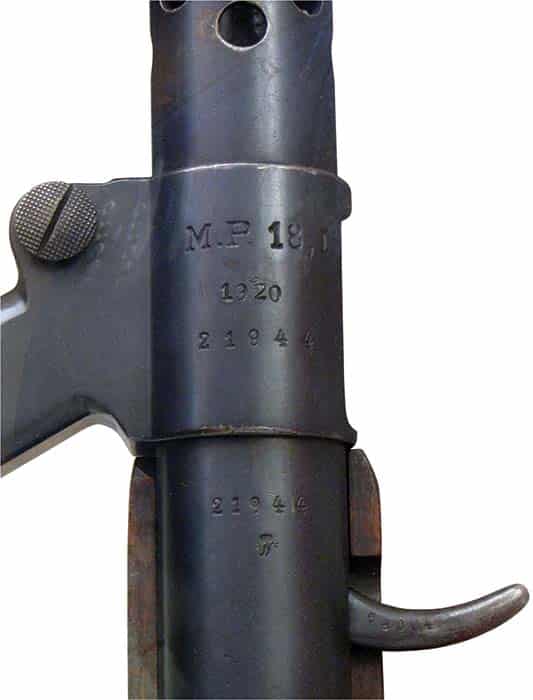
A German submachine gun MP18,I with rare tilted magazine well as used with the snail drum magazine. Military Museum Prague 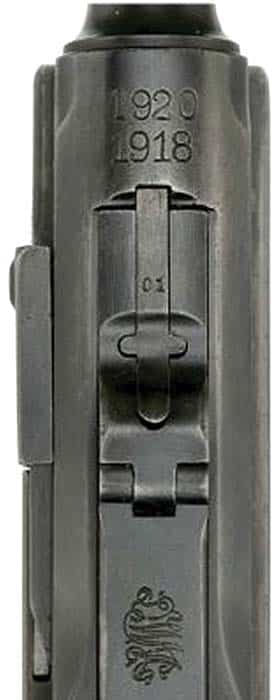
A Pistole 08 made by DWM in 1918. Two years later it got the “1920” mark. Geoffrey Sturgess collection & photo 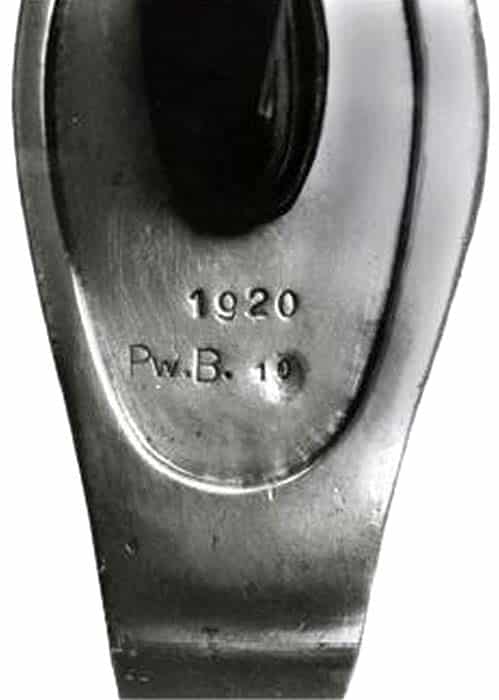
Also bayonets had to be marked. Here a Seitengewehr SG 98/05 with “1920” mark.
At the end of August, a reminder was published in the Army Ordinances Gazette to accelerate the marking of the weapons because the disarming action “is expected very shortly”.
A more detailed explanation on how to handle the marking was published in the Army Ordinances Gazette on September 28, 1920 as instruction number 1123 “Marking of weapons of the Reichswehr / Handing over of privately owned military weapons by disarmament-law”. The reason for this explanation was the confusion caused by pistols and revolvers privately owned by officers, officials and other authorized members of the Reichswehr. These weapons must not be marked because they were not property of the army but rather acquired by their owners by private means. Because of this obligation the weapons did count as official military weapons and thus reduced the total contingent of the Reichswehr. Not all of these pistols and revolvers were affected by the disarmament-law.
The marking “1920” has to be placed only on the following hand guns:
- Revolver 79 and 83
- Short and long pistol 08
- 9 mm Mauser pistol with 10 rounds capacity and removable stock
- Equivalent foreign weapons

A 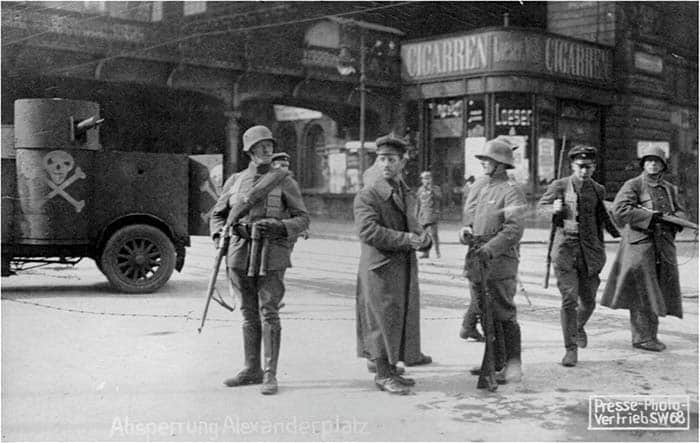
B 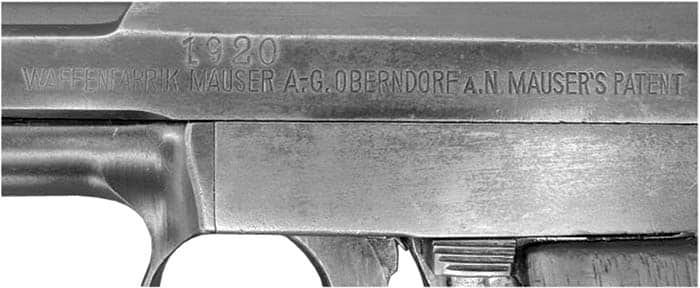
C 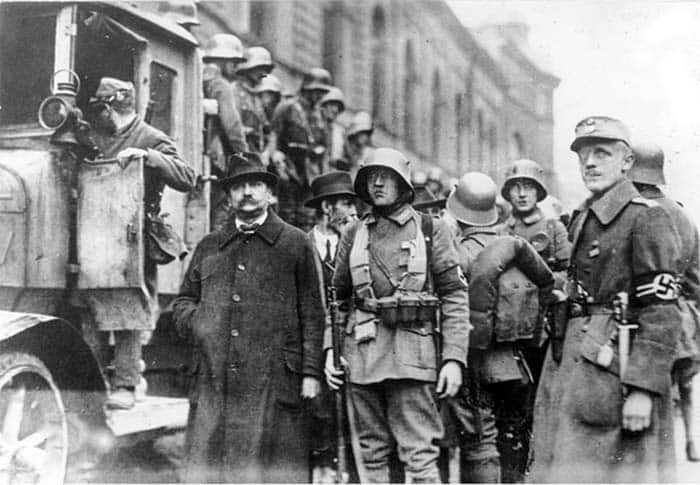
D 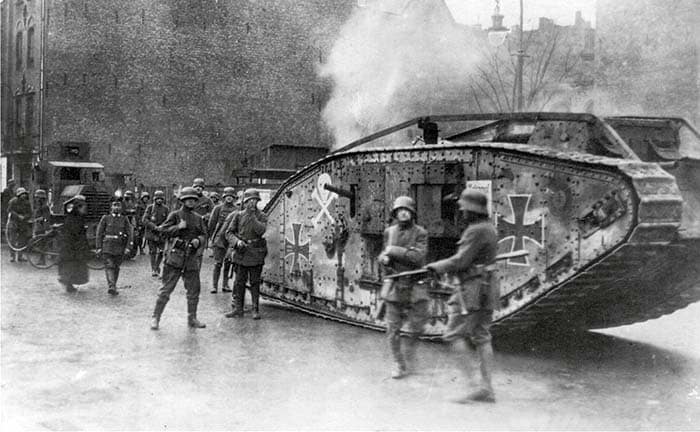
E
No further instructions concerning the markings and the disarmament were published in the Army Ordinances Gazette. It is not known whether this marking-action was helpful or only a waste of time and money. Undoubtedly a large amount of weapons disappeared in dark channels or hidden storages of the army. Too many documents of the past have disappeared and a lot of the secret activities undertaken to fool the Inter-Allied Control Commissions have understandably never been documented on paper. Nevertheless the collecting, controlling, recording and scrapping caused the incredible costs of 200 million Reichsmark.
Today the rare marking “1920” on a collector’s weapon is clear evidence that the specific weapon was in official possession of the German Reichswehr in August 1920. It should be a matter of reflection about the disarming of the people and its consequences in history. It can be a lesson for all of us.
| This article first appeared in Small Arms Review V20N2 (March 2016) |











